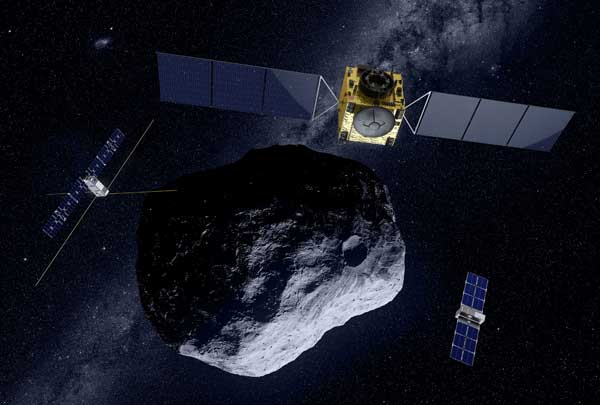
With the maiden flight of Ariane 6 launcher delayed until the fourth quarter of 2023 and no access to Russian Soyuz boosters, the European Space Agency (ESA) has rebooked the Hera asteroid and Euclid space telescope missions for launches aboard a pair of SpaceX Falcon 9 rockets.
Hera is a follow-up to NASA’s successful Double Asteroid Redirection Test (DART) planetary defense mission. Last month, DART crashed into Dimorphos, a moonlet that orbited the Didymos asteroid every 11 hours and 55 minutes. NASA estimates the collision shortened the orbit by 32 minutes.
Hera will conduct an in-depth survey of Dimorphos and Didymos after SpaceX launches the spacecraft in late 2024. The spacecraft will deploy two CubeSats to measure study the asteroid and its moonlet.
ESA had planned to launch Hera on its new Ariane 6 booster, but delays in the program required a change of launch vehicles. Arianespace is in the process of retiring the Ariane 5 booster, meaning there are a limited number remaining.
Euclid will study the evolution of the dark Universe after launch next year. The spacecraft will make a 3D-map of the Universe (with time as the third dimension) by observing billions of galaxies out to 10 billion light-years, across more than a third of the sky.
ESA originally planned to fly on a Russian Soyuz rocket from Europe’s Spaceport in French Guiana. Cooperation on Soyuz launches was suspended after the Russian invasion of Ukraine in February.
ESA also announced the Earth Clouds, Aerosols and Radiation Explorer (EarthCARE) mission will launch aboard a Vega-C rocket in 2024. The mission had been schedule to launch on a Soyuz booster from French Guiana.
EarthCARE is a joint European/Japanese mission whose mission is to characterize clouds and aerosols as well as measure the reflected solar and infrared radiation emitted from Earth’s atmosphere and surface.

